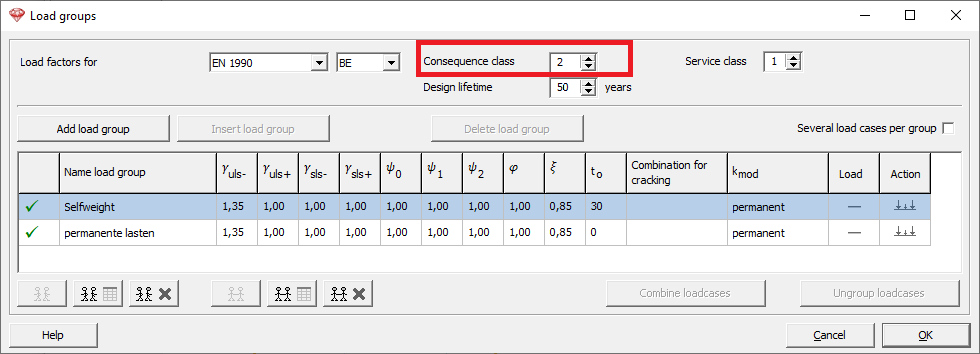It is not practically impossible to determine what the desired structural reliability for each different structure should be. Therefore EN 1990 Annex B divides structures into three consequence classes (CC for short):
| Consequence Class | Consequences | Examples |
|---|---|---|
| CC3 | Chance of losing lives: high Economic/social impact: large |
Grandstands, public buildings, concert hall |
| CC2 | Chance of losing lives: average Economic/social impact: considerable |
Residential and office buildings |
| CC1 | Chance of losing lives: low Economic/social impact: small or negligible |
Argicultural buidlings where people do not normally enter: storage buildings, greenhouses |
The concequence class determines which partial safety coefficients for ULS-combinations should be used:
| CC1 = CC2 * 0.9 | CC2 | CC3 = CC2 * 1,1 | |
|---|---|---|---|
Fixed loads
|
1,22 |
1,35 |
1,5 |
Variable loads
|
1,35 |
1,5 |
1,65 |
Notes:
- The National Annex may provide more detailed tables (which slightly different values) than the ones listed in this article.
- In general, structures in RCi are associated with a consequence class CCi, with a design and calculation supervision DSLi and with an inspection level ILi.
But the Belgian annex NBN EN 1990 ANB:2021 Annex B makes an exception for CC3:
“Exceptionally, for a construction in RC3, the levels DSL 3 and IL3 may be omitted, provided that a KFI factor of 1.1 is not taken, but a KFI factor of 1.2 for the variable loads and a KFi factor 1.1 for permanent loads. Even this last method is not the most preferable method.”
This exception rule is implemented since Diamonds 2023r01 under CC3*. - The consequence class can be entered in the Load Group dialog
 . Diamonds will automatically adjust the partial safety coefficients.
. Diamonds will automatically adjust the partial safety coefficients.


